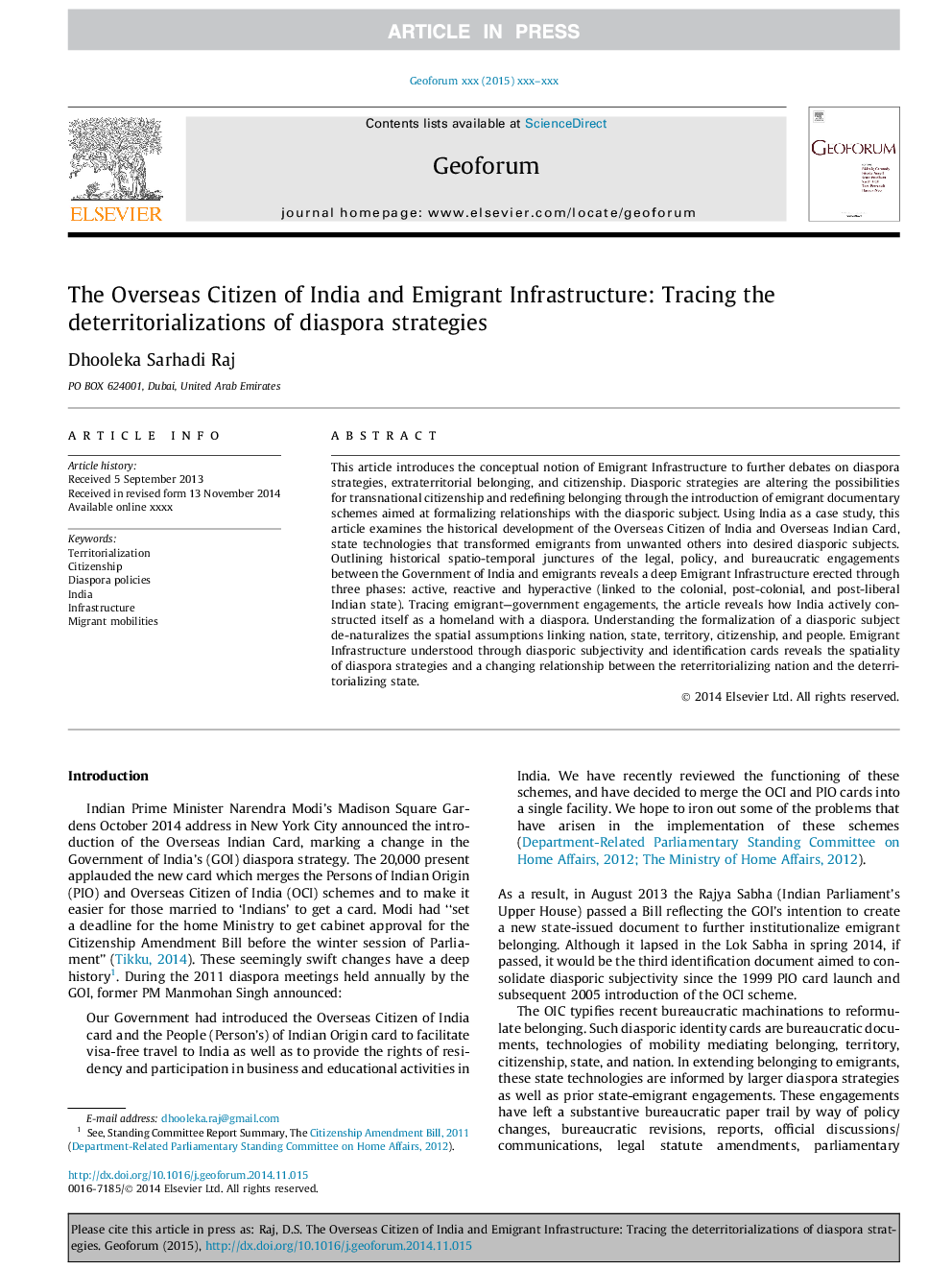| Article ID | Journal | Published Year | Pages | File Type |
|---|---|---|---|---|
| 5073978 | Geoforum | 2015 | 10 Pages |
Abstract
This article introduces the conceptual notion of Emigrant Infrastructure to further debates on diaspora strategies, extraterritorial belonging, and citizenship. Diasporic strategies are altering the possibilities for transnational citizenship and redefining belonging through the introduction of emigrant documentary schemes aimed at formalizing relationships with the diasporic subject. Using India as a case study, this article examines the historical development of the Overseas Citizen of India and Overseas Indian Card, state technologies that transformed emigrants from unwanted others into desired diasporic subjects. Outlining historical spatio-temporal junctures of the legal, policy, and bureaucratic engagements between the Government of India and emigrants reveals a deep Emigrant Infrastructure erected through three phases: active, reactive and hyperactive (linked to the colonial, post-colonial, and post-liberal Indian state). Tracing emigrant-government engagements, the article reveals how India actively constructed itself as a homeland with a diaspora. Understanding the formalization of a diasporic subject de-naturalizes the spatial assumptions linking nation, state, territory, citizenship, and people. Emigrant Infrastructure understood through diasporic subjectivity and identification cards reveals the spatiality of diaspora strategies and a changing relationship between the reterritorializing nation and the deterritorializing state.
Related Topics
Social Sciences and Humanities
Economics, Econometrics and Finance
Economics and Econometrics
Authors
Dhooleka Sarhadi Raj,
